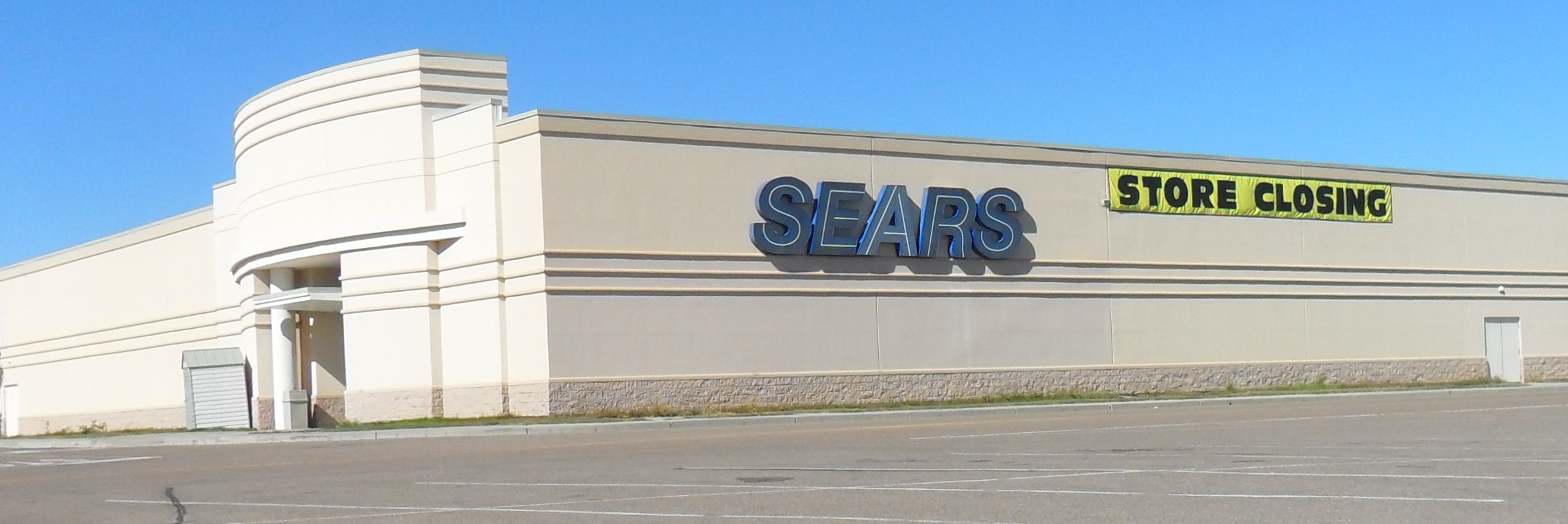Sears – The collapse of a company from within
How a misaligned operating model can cause the decline and possible collapse of a 100 year old company.

Once considered one of the go to places to shop in for middle class Americans1, Sears is now a pale image of its former self, primarily due to an overhaul back in 2008 that completely unaligned the company’s operating model from its core business model. Looking through Sears’ history, they have consistently focused their business model on offering consistent and convenient ways for middle class Americans to purchase quality low-price goods. This first began through the Sears Catalog aimed at giving rural customers an easy way to acquire almost any merchandise they might need (the catalog was over 500 pages long). Beginning in the 1920’s, Sears began to build large department stores in order to provide a superior shopping experience to the growing urban population in the United States.1 The company’s performance began slipping in the 80’s largely due to increased competitive pressure from discount department stores like Wall-Mart and Target and specialty department stores like Home Depot and Best Buy. In an effort to turn the company around, Sear’s merged with Kmart and Hedge fund manager, Edward Lampert, took the company in a new direction.
Up until this point, Sear’s organizational structure had a pretty typical retail organization structure, while store departments were managed separately, they all reported up to the same executive leadership and had a unified approach to their marketing and financial goals.2 In an effort to improve the profitability of the company, Lampert decided to decentralize the operating model in a hope to identify and cut out weaknesses in the company while allowing its strengths to flourish.
In 2008, Lampert decided to divide the company into approximately 40 different free standing business units (e.g. product divisions like appliances and Sears brands like Kenmore appliances)2, each with their own executive team and P&L, with the expectation that all divisions would function completely independent of each other. Even the support divisions of the company were split out; if a division required something from HR or IT, they were treated like an outside client, drafting up contracts for the service or outsourcing the need to an external company.2
While at a high level a decentralized approach may seem to make sense, even the basic strategies and services that retailers provide to customers in order to compete require the store to run as a cohesive unit. Lambert’s decentralized model caused the divisions to compete more with each other rather than the actual competitors as the divisions worked more or less exclusively on their own profit margin (Lampert had tied executive bonuses specifically to that division’s operating profit). For example, product divisions stopped the use of loss leaders (products that are sold below cost as a means to pull customers into the store)3 as that would eat into the division’s top line (even if store profitability as a whole would increase as a result). Some divisions also cut down on their sales associate hours to cut costs, assuming that other department’s sales people would fill the gap. Even their own brands were subjected to this corporate competition. For example, sears’ primary appliance brand, Kenmore, was given inferior storefront space to outside brands that would “sell” to the appliance business unit at a lower price.2 The new operating model has completely paralyzed the company’s ability to effectively compete and provide value to its customers and, as a result, the company revenue has tanked, decreasing by almost 40% since 2008.4
Sources
- http://www.chicagobusiness.com/article/20120421/ISSUE01/304219970/sears-where-america-shopped
- http://www.bloomberg.com/bw/articles/2013-07-11/at-sears-eddie-lamperts-warring-divisions-model-adds-to-the-troubles
- http://www.businessdictionary.com/definition/loss-leader.html
- http://financials.morningstar.com/ratios/r.html?t=SHLD



Thanks for your post. I also wonder how the advent of ecommerce has impacted Sears, which seems like such a traditional company. This decentralized system does not seem to work in a world where online shopping is becoming more and more important.
Spencer – thanks for this post. Every Sears I’ve stepped foot in has struck me as decrepit and lacking in customer service, but it was so interesting to read about the root cause of this. I simply cannot believe an executive leadership team at a large public company thought it was a great idea to seperate the P&Ls by department, leading to this chaos. My question for you is what do you think Sears should do next? Private equity investors have circled Sears and other dying big box chains for the value of its real estate and stores – do you think Sears should liquidate and shut down completely? I personally believe its brand equity is highly negative and they would be best served shutting down – do you see a way for them to re-invent themselves?